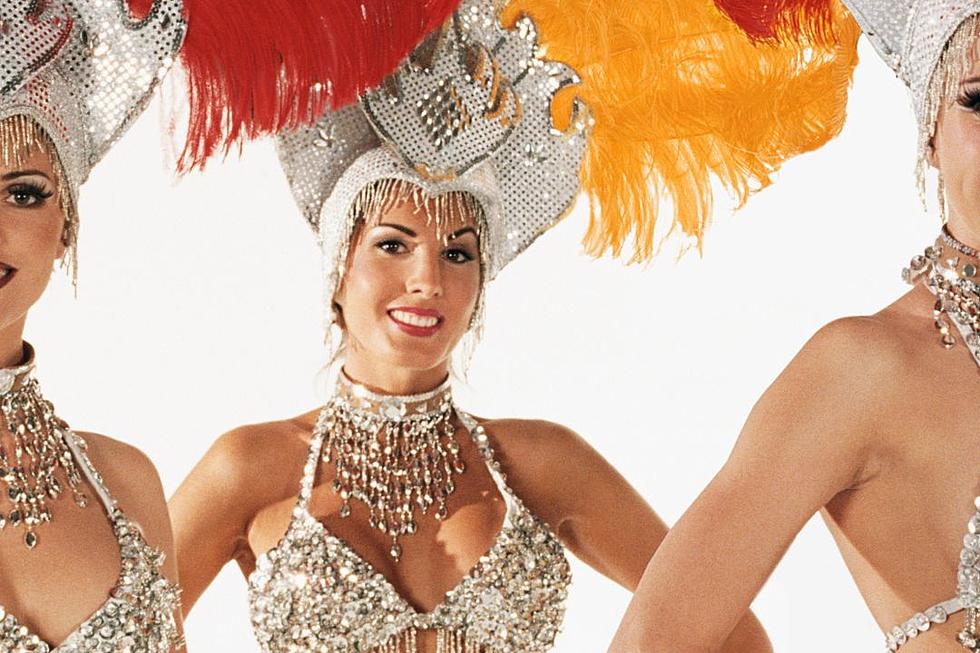
‘…Lola, She Was a Showgirl': The Dark & Tragic Meaning Behind the ‘Copacabana’ Song
"Her name was Lola, she was a showgirl..."
It's one of the most memorable lyrics in music history, so it's no big surprise the song it's from is suddenly going viral online.
However, it seems many listeners, especially on TikTok, are just starting to realize the otherwise upbeat disco song known as "Copacabana (At the Copa)" is much darker and bittersweet than they probably remember.
Released as a single in 1978, "Copacabana" became a global smash hit, and has remained one of the most iconic dance songs of all time. In the U.S., the tropical song peaked at No. 8 on the Billboard Hot 100 chart. The song also performed well internationally, reaching the top 10 in other countries including Canada, Belgium, France and the Netherlands.
In 1985, the track's songwriters (Manilow, Jack Feldman, Bruce Sussman) transformed "Copacabana" into a full-length, made-for-TV musical featuring additional songs and a plot based on the original single's lyrics. The film was subsequently turned into an actual stage musical, which received over 200 worldwide live productions.
Who Sang the Song 'Copacabana'?
"Copacabana" is by famed American singer-songwriter Barry Manilow. It was released off his fifth album, Even Now, in 1978.
According to American Songwriter, "Copacabana" is loosely based on a chic New York City nightclub of the same name — where Manilow used to be a regular in the '60s and which was transformed into a disco in the '70s — as well as the glamorous Copacabana Hotel in Rio de Janeiro, Brazil.
READ MORE: 25 Celebrities You Probably Forgot Starred in Music Videos
Over the course of his career, Manilow has released 13 platinum and six multi-platinum albums. Manilow's other hits include "Mandy," "Looks Like We Made It," "I Write The Songs" and "Could It Be Magic."
In 1978, "Copacabana" earned Manilow his first and only Grammy award (Best Male Pop Vocal Performance).
What Is the Meaning behind the Song 'Copacabana'?
Upon first listen, "Copacabana" appears to be an upbeat song about a glamorous dancing showgirl. While that's partly the case, the song is actually much sadder and more tragic than you may have realized while casually listening.
Set in the 1940s or so, the first verse of the song chronicles the the glitz and glitter of Lola's job as a showgirl as well as her falling in love with Tony, the bartender at the club she works at:
Her name was Lola, she was a showgirl
With yellow feathers in her hair and a dress cut down to there
She would merengue and do the cha-cha
And while she tried to be a star
Tony always tended bar
Across the crowded floor, they worked from eight til four
They were young and they had each other
Who could ask for more?
As the song progresses, listeners are introduced to Rico, a seemingly wealthy and jealous club patron who wants Lola for himself. He and Tony get into a fight, which results in Tony getting killed:
His name was Rico
He wore a diamond
He was escorted to his chair, he saw Lola dancing there
And when she finished, he called her over
But Rico went a bit to far
Tony sailed across the bar
And then the punches flew and chairs were smashed in two
There was blood and a single gun shot
But just who shot who?
The song then jumps 30 years into the future, to the '70s, when the once-chic Copcabana nightclub has been turned into a discotheque.
There we find Lola, now in old age, lingering in the same showgirl dress as she drinks herself "half-blind" while mourning her youth and her late lover.
Her name is Lola, she was a showgirl
But that was thirty years ago, when they used to have a show
Now it's a disco, but not for Lola
Still in dress she used to wear
Faded feathers in her hair
She sits there so refined, and drinks herself half-blind
She lost her youth and she lost her Tony
Now she's lost her mind
The song ends with a melancholic warning: "At the Copa... don't fall in love."
Is Lola the Showgirl a Real Person?
The short answer is no: Lola the showgirl is not a real person. The story told in the "Copacabana" song is not based off any real person. She is entirely fictional.
However, the beautiful and tragic Lola was loosely and generally inspired by the many dancers and showgirls Barry Manilow saw at the nightclubs he frequented in the 1960s.
Check Out the Best-Selling Album From the Year You Graduated High School
Gallery Credit: Jacob Osborn
More From Cars 108







